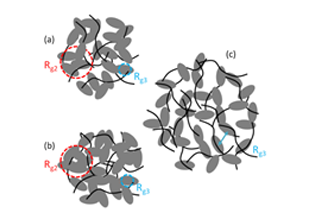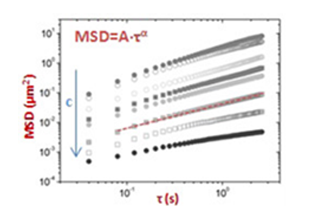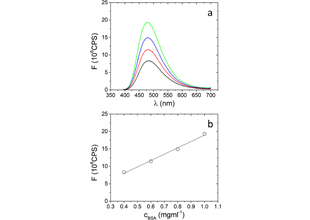Search
CLOSEAdvanced physicochemical characterization and optimization
Dr. Aristeidis Papagiannopoulos
- Development of nanostructured biomaterials
- Advanced physicochemical characterization and optimization
A broad range of advanced experimental methods are developed and used to study the nanostructure, dynamics and molecular interactions of biomaterials. Particle solutions and dispersions, complex fluids, gels and interfaces can be investigated. Advanced applications of microrheology on biopolymer fluids and small angle scattering on nanoparticles and hierarchical soft systems are unique at the national level. These methods allow for the detailed characterization of the physicochemical properties and in addition provide the necessary input for the optimization and the refinement of the designed biomaterials.
A video particle tracking microrheology instrument and software for image processing and data analysis have been developed at the TPCI/NHRF. With this optical technique the viscoelasticity of complex fluids and soft gels as a function of length scale can be extracted. An image analysis software extracts the trajectories of the thermally diffusing probe particles within the biomaterials and statistical description of the ensemble and individual particles’ diffusion are obtained. A numerical analysis software is used to provide rheological parameters such as viscosity, storage modulus and viscous modulus.
Small angle scattering methods are capable of resolving the morphology in solutions, dispersions, complex fluids and hydrogels at length scales between 1 and 100 nm. There is long experience in using large-scale facilities for small angle neutron and X-ray scattering. Small angle neutron scattering in particular has high structural resolving power because of the ability to use contrast variation and contrast matching methods. Software for data analysis and optimization has been developed and an extended library of routines (form factors, structure factors, hierarchical generic models) for employing scattering models and fitting experimental data is available (Monte Carlo minimization etc). Advanced stochastic calculations are employed such as Bayesian analysis to resolve parameters’ interdependencies.
A surface plasmon resonance instrument has been developed to study the adsorption kinetics and the formation of biopolymer films and multilayers at metal/water interfaces. Software has been developed for the goniometer control, data acquisition and data analysis/optimization at the TPCI/NHRF. Quartz crystal microbalance with dissipation (open-QCM) is used for complementary measurements. A homemade set-up for contact angle measurements (including image acquisition and analysis software) is used for the extraction of static, advancing and receding contact angle and of the sessile drop profile. Neutron reflectivity can be performed at large scale facilities to resolve the density profile of the interfaces. Software for data analysis and optimization for the extraction of the interface characteristics is available. Formation, response to external stimuli and stability of polymer, biopolymer, protein and mixed films are characterized.
Physicochemical characterization protocols have been developed and optimized. Fluorescence spectroscopy is used to extract the binding constants between nanoparticles and nutraceuticals by fluorescence quenching and fluorescence enhancement. UV-Vis spectroscopy is applied for the evaluation of nutraceutical encapsulation and degradation. The nanoparticles’ surface hydrophobicity is characterized by fluorescence spectroscopy. Extraction of protein secondary structure (α-helix, β-sheet etc) is achieved by attenuated total reflection-infrared spectroscopy (ATR-FTIR) and peak deconvolution with custom-made software.
Key Publications
- Development of nanostructured biomaterials
- Advanced physicochemical characterization and optimization




